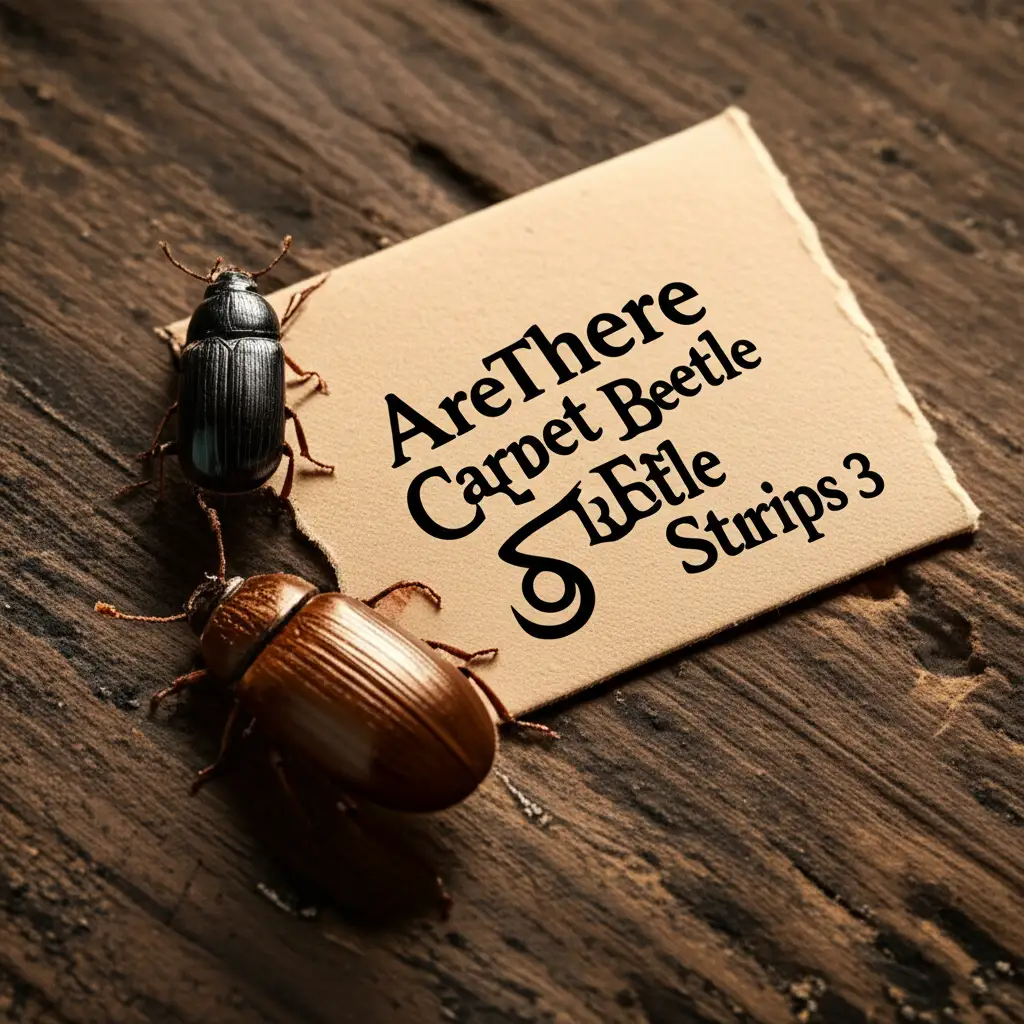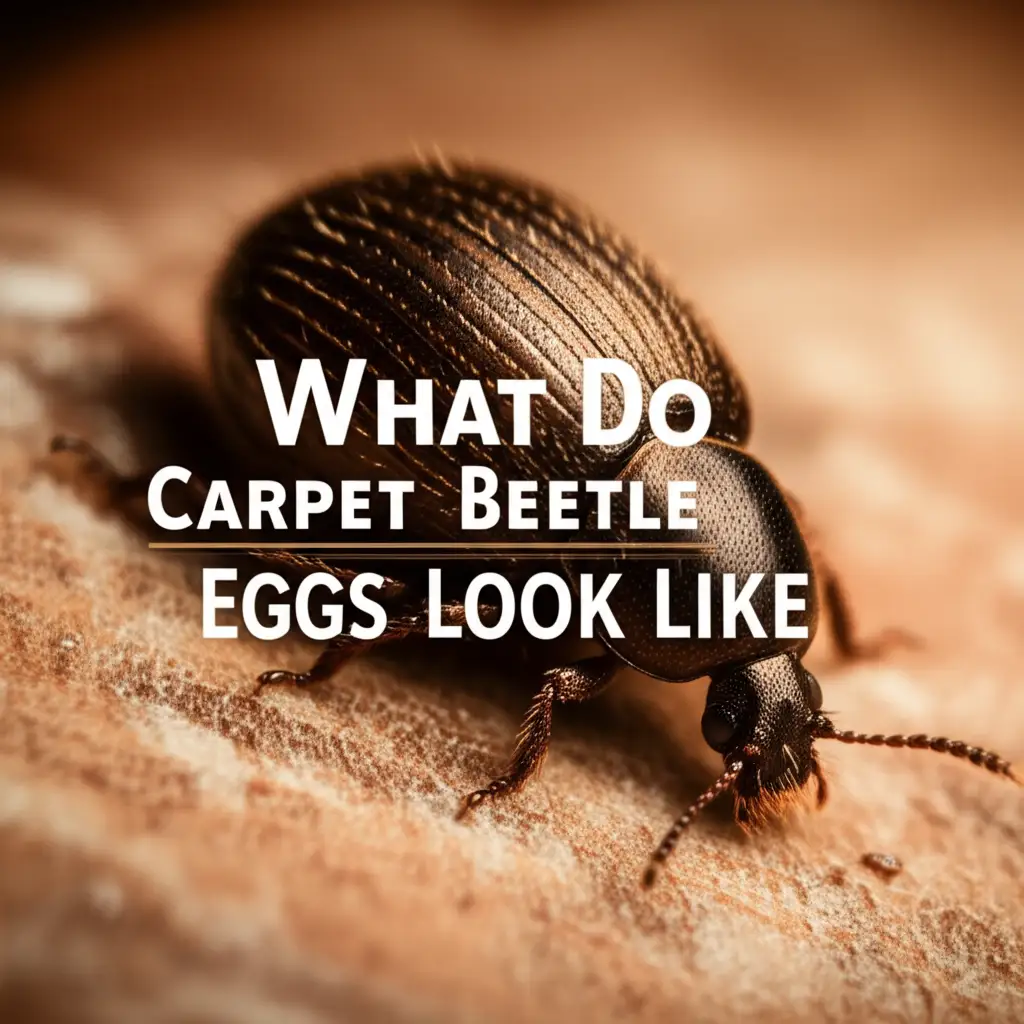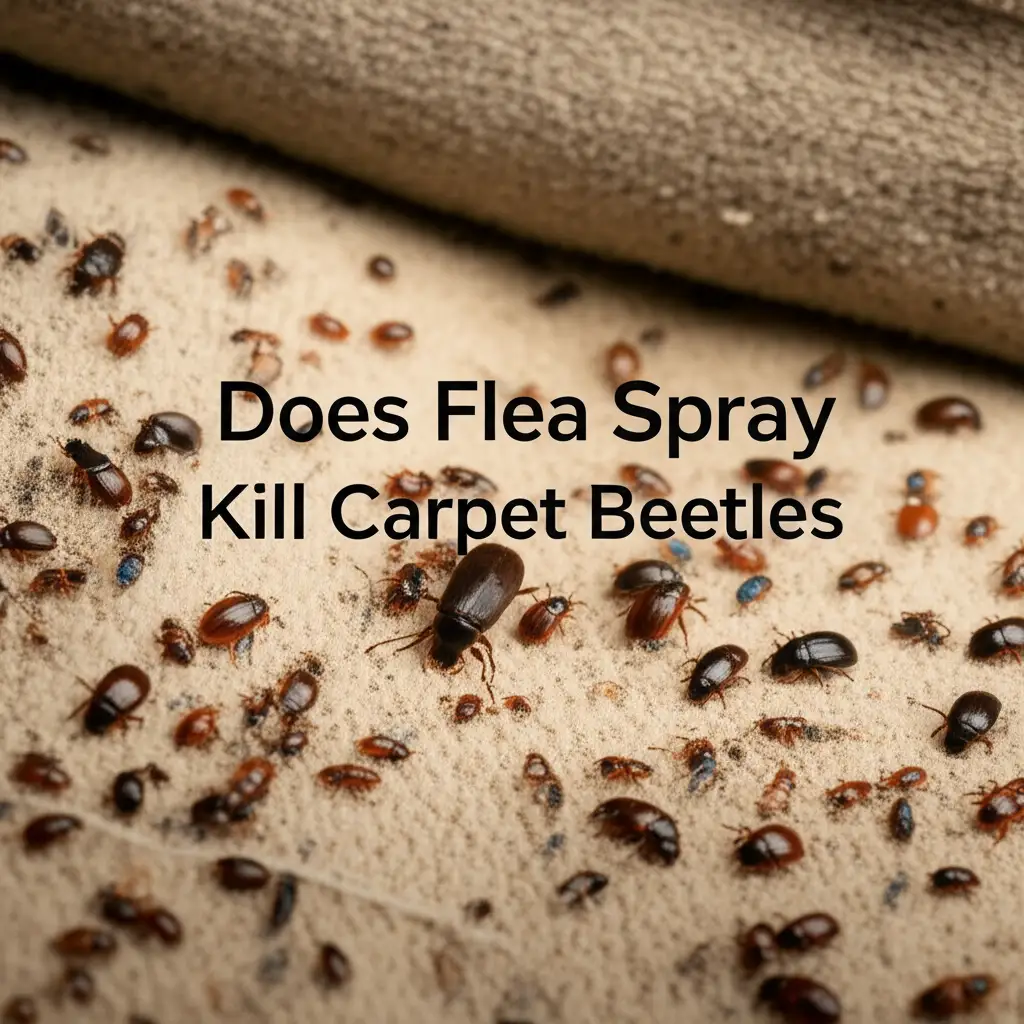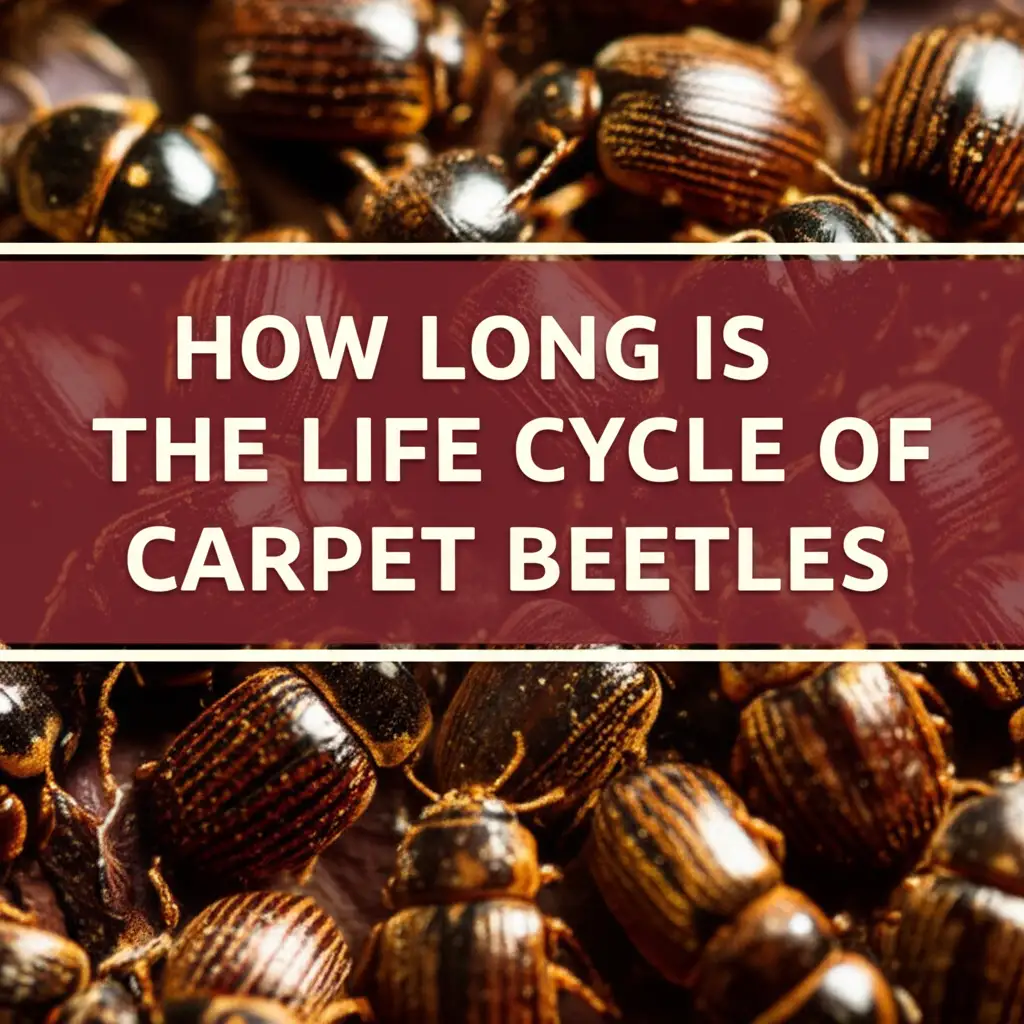· Liora Benning · Pet Health · 16 min read
Can Cat Get Worms From Eating Carpet Beetles

Can Cat Get Worms From Eating Carpet Beetles? Understanding the Risks
You watch your cat pounce on a tiny insect. What was it? Maybe it was a carpet beetle. A sudden worry crosses your mind: “Can cat get worms from eating carpet beetles?” This concern is very common among pet parents. It is natural to worry about what your beloved cat eats, especially if it is not their regular food. Understanding the true risks helps keep your cat safe and your mind at ease. This article will explain if eating carpet beetles can cause worms in cats. We will also discuss other potential issues, how cats actually get worms, and ways to protect your furry friend from parasites and pests.
Takeaway
- Direct Worm Transmission is Unlikely: Eating carpet beetles does not directly give your cat internal worms like roundworms or tapeworms.
- Minor Digestive Upset Possible: Ingesting insects can sometimes cause mild stomach upset, vomiting, or diarrhea.
- Focus on Real Worm Sources: Cats typically get worms from fleas, infected prey (like rodents), or contaminated environments.
- Pest Control is Key: Manage carpet beetle infestations to reduce your cat’s exposure to insects and potential secondary issues.
- Regular Vet Care Matters: Routine deworming and veterinary check-ups are essential for preventing and treating cat parasites.
Can a cat get worms from eating carpet beetles?
No, a cat cannot get worms directly from eating carpet beetles. Carpet beetles do not carry the specific parasites that cause common internal worms in cats, such as roundworms, hookworms, or tapeworms. While a cat might experience mild stomach upset from eating insects, carpet beetles are not a vector for these feline internal parasites.
Understanding Carpet Beetles and Your Cat’s Curiosity
Carpet beetles are small insects that often live indoors. They feed on natural fibers like wool, silk, fur, and pet hair. You might find them in carpets, rugs, furniture, or even in stored clothing. Adult carpet beetles are oval-shaped and typically dark-colored. Their larvae are tiny, hairy, and worm-like in appearance. These larvae cause most of the damage to household items.
Cats are natural hunters. Their instincts tell them to chase and play with anything that moves. A carpet beetle, crawling across the floor, looks like a perfect toy. My own cat often bats at tiny specks. Sometimes, they might even try to eat the beetle out of curiosity. This behavior is normal for a cat. Most household insects are not dangerous for cats to eat. However, some insects can cause problems.
Understanding why we get carpet beetles can help you manage their presence in your home. These pests often enter through cracks, open windows, or on items brought inside. They thrive in undisturbed areas where food sources like pet dander or lint collect. Keeping your home clean reduces their appeal. Many people wonder what do carpet beetles hate. They dislike clean, undisturbed spaces. Regular vacuuming and proper storage of textiles can deter them.
It is important to distinguish between carpet beetles and other insects. Fleas, for example, are known carriers of tapeworms. If your cat eats a flea, they can get tapeworms. Carpet beetles do not carry these same parasites. So, a direct link between carpet beetle ingestion and internal worms in cats does not exist. However, reducing any insect population in your home is always a good idea for overall hygiene and pet safety. If you use pest control, ensure it is safe for pets. Some flea sprays kill carpet beetles, but always check the label for pet safety.
The Truth About Cats, Worms, and Insect Ingestion
Cats get worms through specific pathways, none of which involve carpet beetles directly. The most common way cats get tapeworms is by ingesting infected fleas during grooming. Fleas can carry the larval stage of the tapeworm. When a cat swallows an infected flea, the tapeworm matures in their intestine. This is a very common scenario for cats.
Another common way cats get worms is through contaminated soil or feces. Roundworm and hookworm eggs are often found in the environment. Cats can pick up these eggs by walking through contaminated areas and then licking their paws. They can also get them by eating small infected prey animals like rodents or birds. Kittens often get roundworms from their mother’s milk. Heartworms are different; they are transmitted through mosquito bites.
My cat once got tapeworms, and it was from fleas, not any other bug. We had to treat both the fleas and the tapeworms. This experience taught me the importance of flea control. Eating a carpet beetle or any non-parasite-carrying insect generally poses little threat for internal parasites. The concern about worms comes from a misunderstanding of parasite life cycles.
While a carpet beetle does not cause worms, eating any insect can sometimes lead to minor issues. A cat might gag or vomit if the insect has a hard exoskeleton or an unpleasant taste. Some insects can cause a mild allergic reaction, though this is rare with common household beetles. The digestive system of a cat is designed to handle some insect ingestion. Their strong stomach acid usually breaks down small bugs.
We often worry about every little thing our cats eat. But rest assured, a carpet beetle is not a direct route to an intestinal worm infection for your cat. Focus on known worm prevention methods. These include regular deworming, flea prevention, and keeping your cat away from infected prey.
Common Internal Parasites in Cats
Understanding the different types of internal parasites helps to clarify why carpet beetles are not a concern. Cats are susceptible to several common types of worms. Each type has a specific way of infecting your cat. Knowing these pathways helps you protect your pet.
Roundworms (Toxocara cati and Toxascaris leonina):
- These are long, spaghetti-like worms. They live in the cat’s intestines.
- Cats typically get roundworms by eating infected prey. This includes rodents or birds.
- Kittens can also get them from their mother’s milk.
- Contact with contaminated soil or feces is another way. The eggs are microscopic and can live in the environment for a long time.
Hookworms (Ancylostoma spp. and Uncinaria stenocephala):
- Hookworms are small, thin worms that attach to the intestinal wall. They feed on blood.
- Cats usually get hookworms by eating hookworm larvae from contaminated soil.
- The larvae can also penetrate the cat’s skin directly.
- Like roundworms, kittens can get them from their mother’s milk.
Tapeworms (Dipylidium caninum and Taenia taeniaeformis):
- Tapeworms are segmented worms that live in the cat’s small intestine.
- Dipylidium caninum is the most common type. Cats get this by swallowing an infected flea.
- Taenia taeniaeformis is acquired by eating infected rodents.
- My vet always emphasizes flea control to prevent tapeworms. It is the number one cause.
Heartworms (Dirofilaria immitis):
- Unlike intestinal worms, heartworms live in the heart, lungs, and blood vessels.
- They are transmitted solely through the bite of an infected mosquito.
- This means your cat cannot get heartworms from eating anything, including insects or rodents.
Other Parasites:
- Cats can also get other intestinal parasites like Coccidia and Giardia. These are not worms but single-celled organisms.
- They are spread through contaminated feces or water. They cause severe diarrhea.
It is clear that none of these common cat worms or parasites use carpet beetles as an intermediate host. Therefore, if your cat has worms, the source is likely fleas, contaminated food, soil, water, or infected prey, not a casual snack of a carpet beetle. Regular vet check-ups and parasite prevention are key to keeping your cat free from these internal invaders.
Beyond Worms: Other Potential Issues from Eating Insects
While eating carpet beetles won’t give your cat worms, there are other minor concerns. Most insects are harmless to cats in small amounts. However, occasionally, a cat might experience some mild problems. It is good to be aware of these possibilities.
One potential issue is digestive upset. Some insects have hard exoskeletons or strong tastes. These can be difficult for a cat’s stomach to process. Your cat might vomit or have mild diarrhea after eating an insect. This is usually temporary. My cat once ate a fly and had no issues. Another time, she ate something else small, and it caused her to throw up a little. This type of reaction is generally a one-off event. If your cat does vomit, you might need to clean the area. Here are tips on how to remove cat vomit from carpet. Prompt cleaning helps prevent stains and odors.
Another concern is pesticide exposure. If you have recently used insecticides in your home, the carpet beetles might have come into contact with them. Even if you use pet-safe products, residual chemicals can sometimes be an issue. Always read product labels carefully. Choose pet-friendly pest control methods when possible. It is safer for everyone in the home.
Choking hazards are also a rare but possible risk. Larger insects or those with spiny legs could potentially get stuck in a cat’s throat. This is more of a concern with bigger bugs like grasshoppers or larger spiders, rather than small carpet beetles. Still, it is a possibility with any foreign object ingested.
Finally, some cats might have a mild allergic reaction to certain insect proteins. This is not common with carpet beetles. Symptoms could include skin irritation, itching, or swelling. These reactions are typically not severe or life-threatening.
In general, the risks associated with a cat eating a carpet beetle are low. They are unlikely to cause serious harm. The primary concern is usually mild digestive upset. The best approach is to minimize your cat’s exposure to all insects in the home. This reduces any potential for these minor issues.
Identifying and Managing a Carpet Beetle Infestation
Knowing how to find and deal with carpet beetles is important for a clean home and a safe cat. An infestation means more chances for your cat to interact with them. Even though they do not cause worms, you still do not want an abundance of them around.
Signs of a Carpet Beetle Infestation:
- Damaged Fabrics: Look for irregular holes in wool carpets, rugs, clothing, or upholstered furniture. Carpet beetle larvae cause this damage.
- Shed Skins: You might see tiny, brown, shell-like casings. These are the skins the larvae shed as they grow.
- Adult Beetles: Spotting adult beetles crawling on walls, windowsills, or near light sources. They are usually small, oval, and dark.
- Larvae: Finding the small, hairy, worm-like larvae in dark, undisturbed areas. Check under furniture or in closets.
- Fecal Pellets: Tiny, sand-like droppings might be visible in infested areas.
Preventing Carpet Beetles:
- Regular Cleaning: Vacuum your carpets, rugs, and upholstery often. This removes food sources like pet hair, lint, and dead insects. Pay attention to edges and under furniture.
- Store Items Properly: Keep woolens, furs, and other natural fibers in airtight containers. Use cedar or mothballs for extra protection in storage.
- Check Entry Points: Seal cracks around windows and doors. This stops beetles from coming inside.
- Clean Pet Areas: Regularly wash pet bedding. Consider if you can put a cat bed in a washing machine to clean it thoroughly. This removes dander and hair that carpet beetles love.
- Inspect New Items: Before bringing in used furniture, rugs, or clothing, inspect them carefully for signs of beetles.
Managing an Infestation Safely with Pets:
- Vacuum Thoroughly: This is your best tool. Vacuum all affected areas, then immediately empty the vacuum bag outside.
- Launder Infested Items: Wash and dry infested fabrics at high temperatures. For items that cannot be washed, professional dry cleaning or freezing can help. For small items, some people consider if they can microwave fabric to kill carpet beetles. Be cautious with this method due to fire risks.
- Use Diatomaceous Earth: Food-grade diatomaceous earth is a natural powder that kills insects by dehydrating them. It is safe for pets when used correctly. Sprinkle it in cracks and crevices, then vacuum after a few hours.
- Professional Pest Control: For severe infestations, consider calling a professional. Ensure they use pet-safe treatments. Always discuss your pet’s presence with them beforehand.
Keeping your home free of carpet beetles benefits both your belongings and your pet’s environment. A clean home means fewer bugs for your cat to find and potentially ingest.
Keeping Your Home and Cat Worm-Free
Preventing worms in cats is a proactive process. It involves regular veterinary care and good hygiene practices at home. While carpet beetles are not a source of worms, other common factors are. Focusing on these known causes helps keep your cat healthy.
Regular Veterinary Check-ups and Deworming:
- Fecal Exams: Your veterinarian will often recommend regular fecal exams. This checks for worm eggs in your cat’s stool. Early detection helps treatment.
- Scheduled Deworming: Kittens typically need deworming multiple times. Adult cats often benefit from deworming at least once a year, or more frequently depending on their lifestyle. If your cat hunts outdoors, they might need deworming more often. My vet always recommends a deworming schedule for my indoor-outdoor cat.
- Heartworm Prevention: If you live in an area where heartworms are common, your vet might recommend monthly preventative medication. This is usually a chewable or topical treatment.
Effective Flea Control:
- Monthly Flea Prevention: Use a veterinarian-recommended flea preventative. These products kill fleas, breaking the tapeworm life cycle. This is very important. I use a topical treatment for my cat every month.
- Treat the Environment: If you have fleas, you must treat your home too. Vacuum frequently, wash pet bedding in hot water, and consider using pet-safe household flea treatments.
Environmental Hygiene:
- Clean Litter Boxes: Scoop the litter box daily. Clean the entire litter box regularly with soap and water. This reduces the spread of worm eggs through feces.
- Prevent Outdoor Hunting: If possible, limit your cat’s outdoor hunting. Eating infected rodents or birds is a common way cats get roundworms and tapeworms. Keeping your cat indoors significantly reduces this risk.
- Control Rodents: If you have a rodent problem in your home, address it. Rodents can carry various parasites that can then infect your cat.
- Regular Cleaning of Home: Beyond just vacuuming, general cleanliness helps. Keeping your home tidy reduces places for pests to hide. If your cat has an accident, like cat urine on a rug, cleaning an oriental rug with cat urine promptly helps maintain hygiene.
By focusing on these preventative measures, you can greatly reduce your cat’s risk of getting worms. A healthy diet, fresh water, and a clean living environment also contribute to your cat’s overall well-being. These efforts create a healthier home for your cat and peace of mind for you.
When to Consult Your Veterinarian
Knowing when to seek professional help is vital for your cat’s health. While eating carpet beetles is unlikely to cause serious issues, other symptoms might indicate a worm infection or another health problem. It’s always best to err on the side of caution.
Symptoms of Worms in Cats:
- Vomiting: Persistent vomiting can be a sign of a worm burden. Sometimes, you might even see worms in the vomit.
- Diarrhea: Loose stools, especially if bloody or containing mucus, can indicate intestinal parasites.
- Weight Loss: Despite eating normally, a cat with worms might lose weight because the worms absorb nutrients.
- Pot-bellied Appearance: This is more common in kittens with heavy roundworm infections. Their belly looks swollen.
- Dull Coat: A cat’s fur might become dull, dry, or rough.
- Coughing: Some worms, like roundworms, can cause coughing during their migratory phase through the lungs.
- Scooting: A cat might drag its rear end on the floor. This is often a sign of tapeworms. You might also see small, rice-like segments (tapeworm segments) around their anus or in their stool.
- Changes in Appetite: Your cat might be hungrier or lose interest in food.
When to Call the Vet Immediately:
- Severe Vomiting or Diarrhea: Especially if accompanied by lethargy or dehydration.
- Visible Worms: If you see worms in your cat’s vomit or feces.
- Difficulty Breathing or Persistent Coughing: This could suggest heartworms or a severe lungworm infection.
- Sudden Weight Loss or Poor Condition: Unexplained changes should always be investigated.
- Any concerning behavior changes: If your cat acts unusual.
I always advise visiting the vet yearly for routine check-ups. My vet always answers my questions about my cat’s health, no matter how small. These visits are perfect for discussing parasite prevention and general wellness. If you suspect your cat has worms or any other illness, do not delay. Early diagnosis and treatment lead to better outcomes for your cat. Your vet can perform tests, accurately diagnose the problem, and prescribe the correct medication. They can also offer tailored advice for ongoing parasite prevention based on your cat’s lifestyle and risk factors. Trust your instincts as a pet owner. If something feels off, a quick vet visit provides peace of mind.
Frequently Asked Questions
Can cats eat carpet beetle larvae?
Yes, cats can eat carpet beetle larvae. The larvae are small and soft-bodied. They pose no significant health risk to cats beyond a potential mild stomach upset. They do not carry worms. My cat has eaten them before without any problems.
Are carpet beetles poisonous to cats?
No, carpet beetles are not poisonous to cats. They are not toxic. Eating them will not cause poisoning. Some cats might have a slight digestive reaction, like vomiting, if they eat too many or if the beetle has a strong taste.
What happens if my cat eats an insect?
If your cat eats a common household insect, it usually causes no harm. Their digestive system can handle most small bugs. Sometimes, they might have mild stomach upset, vomiting, or diarrhea. Serious issues are rare.
How do cats actually get internal worms?
Cats most commonly get worms from swallowing infected fleas (tapeworms), eating infected prey like rodents or birds (roundworms, tapeworms), or coming into contact with contaminated soil or feces (roundworms, hookworms). Mosquito bites transmit heartworms.
How can I prevent my cat from eating bugs?
It is hard to stop cats from hunting bugs completely. You can reduce their exposure by maintaining a clean home. Vacuum regularly, seal entry points for insects, and address any pest infestations. This limits the number of bugs your cat finds.
Should I be worried if my cat ate a carpet beetle?
You should not worry if your cat ate a carpet beetle. There is no direct link between carpet beetles and internal worms in cats. Monitor your cat for any signs of stomach upset, but serious health risks are highly unlikely.
Conclusion
The worry “can cat get worms from eating carpet beetles” is understandable for any caring pet owner. However, you can rest easy knowing that carpet beetles do not directly transmit internal parasites like roundworms or tapeworms to cats. Cats typically acquire these worms through other means, such as ingesting infected fleas, eating contaminated prey, or exposure to parasite eggs in the environment.
While eating a carpet beetle is unlikely to cause worms, a cat might experience minor digestive upset. This is usually temporary and resolves on its own. The best defense for your cat’s health involves proactive measures. Regular flea control, routine deworming as advised by your veterinarian, and maintaining a clean home environment are all crucial steps. If you notice any signs of illness in your cat, such as persistent vomiting, diarrhea, or changes in appetite, always consult your veterinarian promptly. They can provide an accurate diagnosis and the right treatment plan. Your attention to these aspects ensures your beloved feline companion stays healthy, happy, and free from parasites.





